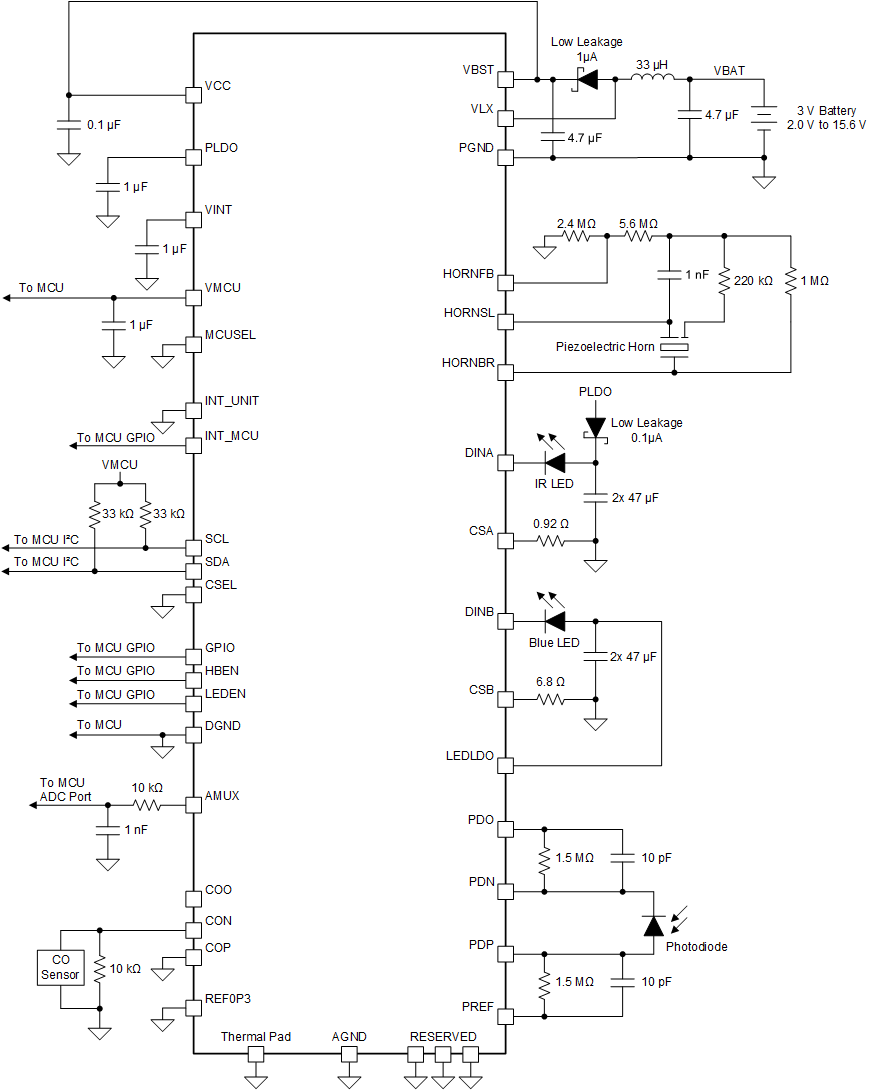SLVAET3 October 2021 TPS8802
- Trademarks
- 1Introduction
- 2System Architecture
- 3Current Consumption
- 4System Power Calculation and Measurements
- 5Summary
- 6References
2.5.1 Smoke and CO Schematics
 Figure 2-7 Smoke and CO System Schematics for Minimum Power Consumption
Figure 2-7 Smoke and CO System Schematics for Minimum Power ConsumptionThe smoke and CO system connects VBST to VCC to allow battery voltages down to 2.0 V. Here the MCU LDO is set to 1.8 V, a low voltage that can be powered without the boost converter being enabled. The boost converter can be enabled to 2.7 V, 3.8 V, or 4.7 V to supply the IR LED through PLDO with a low-leakage (0.1 µA) Schottky diode. The blue LED is supplied by the LED LDO to support the higher blue LED forward voltage. The CO amplifier is continuously enabled to track the slowly-varying CO concentration signal.